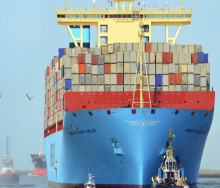Minister of Forestry, Fisheries and the Environment, Barbara Creecy, has published South Africa’s 8th National Greenhouse Gas Inventory Report (NIR) which shows the country’s net emissions have declined marginally in recent decades.
The report contains a detailed inventory of South Africa’s annual greenhouse gas (GHG) emissions from 2000 to 2020 and covers sources of emissions and removals by sinks. Among the causes of major greenhouse gases from human activity are carbon dioxide (CO2), methane (CH4), nitrous oxide (N2O), perfluorocarbons (PFCs) and hydrofluorocarbons (HFCs).
The department said in a statement on Wednesday that the GHG inventory was central to tracking the implementation of South Africa’s Nationally Determined Contribution (NDC).
“We are proud of the robust format of our monitoring, which has been developed over the past 15 years and includes both public comment and independent verification and is designed to support domestic and international reporting obligations,” the department said.
Indirect greenhouse gases included in the report for information purposes are carbon monoxide and oxides of nitrogen.
Emissions estimated in the report are for four broad emission sectors: namely energy, industrial processes and product use (IPPU), agriculture, forestry and other land use (AFOLU) and waste.
"The GHG inventory shows that South Africa’s net emissions decreased marginally from 2000-2020 by about 0.8%. South Africa’s net GHG emissions in CO2 equivalent were 446 million tonnes in 2000 and declined to 442m tonnes in 2020,” it said.
“However, in the period between 2017 and 2020, net GHG emissions declined by 5.9%, primarily as a result of the Covid-19 pandemic,” Creecy said.
“Power generation, transport, industrial fuel use, fugitive emissions from processing of fuels, livestock and waste management are the biggest sources of greenhouse emission in South Africa. Even though the emissions profile declined between 2017 and 2020, preliminary assessment using data from the SAGERS system for 2021 shows that some of the emission sources have increased compared to 2020 levels,” the department said.
This implies that from 2021 onwards the most carbon-intensive assets are likely to return to pre-Covid emission rates in line with international trends in developed countries.
This 8th GHG inventory also highlights the role carbon sinks play in lowering the net greenhouse gas emission profile for the country.
“Over the next two decades, South Africa will have to increase its carbon sinks in order to reach the long term-goal of a net-zero carbon economy and society by 2050. Afforestation, reforestation, reversing of land degradation and grassland management are key activities to achieve this long-term objective,” the department said.
The inventory will be communicated to the United Nations Framework Convention on Climate Change (UNFCCC), of which South Africa is a member.
“As part of the effort to enhance transparency when compiling its GHG emission estimates, South Africa is one of the few countries that publishes its GHG inventory for public comment and subjects the report to a UNFCCC-style review process,” the department said.
Access the GHG Inventory Report here. - SAnews.gov.za













